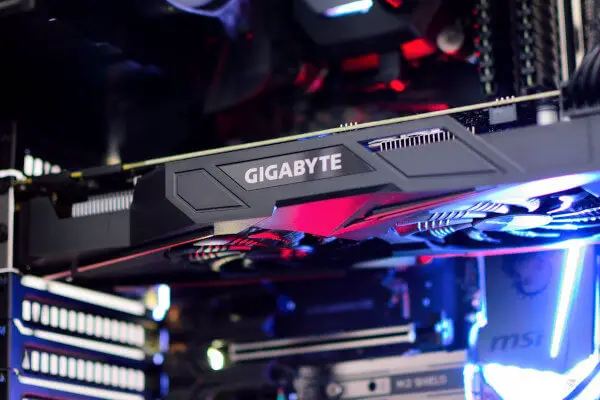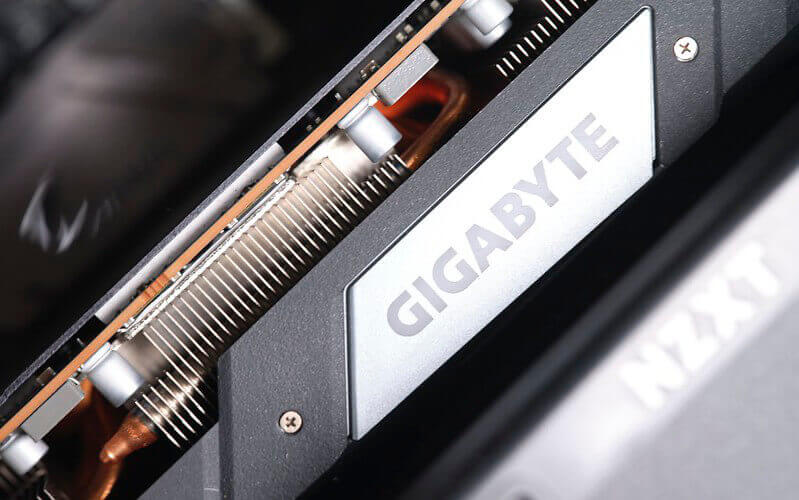If you’re reading this article, you’re probably experiencing some trouble with your graphics card not displaying. It can be incredibly frustrating to power on your computer and be met with a blank screen, especially if you’re in the middle of an important task or project.
As someone who has experienced this issue, I understand how concerning it can be. A graphics card is a vital computer system that renders images and videos on your screen.
So when it’s not working properly, it can feel like you’re at a loss.
But don’t worry; some common causes and ways to troubleshoot and fix this issue exist. In this article, I’ll walk you through the potential causes and provide step-by-step guidance on troubleshooting and preventing this issue from happening again.
Let’s get started!
Common Causes of Graphics Card Not Displaying
Here are the common causes of graphics card not displaying:
- Outdated or corrupted graphics driver: Drivers allow your graphics card to communicate with your computer, so if they’re not up-to-date or malfunctioning, it can cause display issues.
- Incorrect BIOS settings: BIOS (basic input/output system) is responsible for loading your operating system, and if it’s not set up correctly, it can cause issues with your graphics card.
- Physical connection issues: If the graphics card is not properly seated in the PCIe slot or the power cables are not properly connected, it can cause the display not to work.
- Overheating graphics card: If the graphics card is overheating, it can cause display issues. This can be due to a lack of airflow or other cooling problems.
- Power supply issues: If the power supply is insufficient for your graphics card’s requirements, it can cause display issues or other problems with your computer system.
- Hardware incompatibility: Some older or less common hardware may not be compatible with certain graphics cards, so it’s important to check compatibility before purchasing.
- Malware or viruses: Malware or viruses on your computer can cause various issues, including graphics card display problems. Running a thorough virus scan can help identify and remove any threats.
- Faulty graphics card: In some cases, the graphics card itself may be faulty or damaged, causing display issues. If all other troubleshooting methods have been exhausted, it may be time to consider a replacement graphics card.
Remember, there are many potential causes of graphics cards not displaying, so it’s important to carefully troubleshoot and diagnose the issue before attempting any solutions.
How to Fix Graphics Card Not Displaying

If you’re experiencing the issue of your graphics card not displaying properly, there are a few troubleshooting steps you can take. First, you’ll want to check your graphics driver and ensure it’s up-to-date.
You can usually find the latest driver on the manufacturer’s website. If that doesn’t solve the issue, you might need to uninstall and reinstall the driver.
Another potential solution is to check your BIOS settings. Ensure your primary display is set to your graphics card and that the onboard graphics are disabled if you’re using a dedicated card.
If you’re unsure how to access your BIOS settings, look at my guide on How to Enter BIOS in Asus Laptop.
If neither of these solutions works, you’ll want to check the physical connection between your graphics card and your motherboard. Ensure the card is properly seated in the PCIe slot and the power cables are properly connected.
If you have a spare PCIe slot, you could also try moving the card to see if that fixes the issue.
Finally, if your graphics card is overheating, it could be causing display issues. You can use software like MSI Afterburner to monitor your card’s temperature and adjust the fan speed. You might also consider cleaning your graphics card and removing any dust or debris obstructing the airflow.
Hopefully, one of these solutions will help you display your graphics card properly again. If not, it might be time to seek professional assistance.
Related: Are Gigabyte Graphics Cards Good?
Prevention
To prevent the issue of your graphics card not displaying, you can do a few things. One of the most important is to update your graphics driver regularly.
You can set your computer to automatically check for updates or habitually check for updates yourself every few weeks. Keeping your driver up-to-date can help prevent display issues from occurring.
Another preventative measure is to make sure your BIOS settings are correct. You can check the manufacturer’s website for recommendations if you are unsure of what settings to use.
It’s also a good idea to ensure that your power supply is sufficient for your graphics card’s requirements. Check the card’s specs and compare them to your power supply’s output to ensure you’re not overtaxing it.
Regular maintenance can also help prevent the issue of graphics cards not displaying.
Make sure your computer is free of dust and debris that could obstruct the airflow to your graphics card.
Compressed air can blow out dust buildup and ensure your fans are clean and running smoothly. Additionally, if you’re using your computer for resource-intensive tasks like gaming or video editing, consider investing in a cooling pad or other cooling solution to help prevent overheating.
By following these preventative measures, you can help reduce the likelihood of experiencing the graphics card not displaying issues in the future.
Conclusion
Experiencing the issue of your graphics card not displaying can be incredibly frustrating, but there are steps you can take to troubleshoot and prevent it.
By checking your graphics driver and BIOS settings, ensuring the physical connection is secure, monitoring your card’s temperature, and performing regular maintenance, you can reduce the likelihood of this issue occurring.
However, if you’ve tried all these solutions and the issue persists, it might be time to seek professional assistance. A qualified technician can help you diagnose and repair the problem or recommend a replacement if necessary.
I hope this article has helped address the graphics card not displaying issue. Remember, taking preventative measures and regular maintenance can go a long way in keeping your computer system running smoothly.
Thanks for reading, and happy computing!






